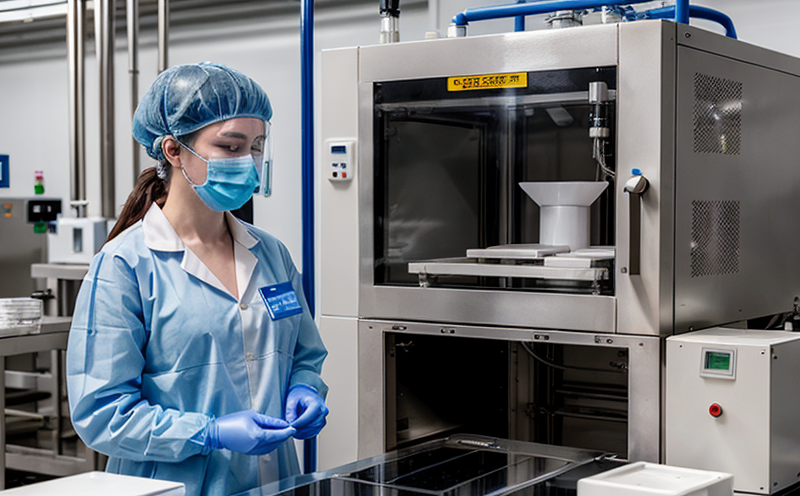GMP Long Term Stability Testing
In the pharmaceutical industry, Good Manufacturing Practice (GMP) compliance is paramount. One critical aspect of ensuring GMP adherence is long term stability testing. This type of testing ensures that drug products remain safe and effective under specified storage conditions over extended periods.
Long term stability testing involves monitoring physical, chemical, and biological attributes to determine the shelf life of a product. It helps pharmaceutical manufacturers and quality assurance teams ensure that their drugs meet all regulatory standards and are consistent with initial clinical trial results throughout their lifecycle. This process is particularly important for active pharmaceutical ingredients (APIs), excipients, and formulated products.
The testing protocol typically involves storing samples under various environmental conditions such as temperature, humidity, light exposure, and accelerated aging processes. These conditions simulate real-world storage scenarios, ensuring the drug maintains its integrity during shipment, storage, and use by patients.
Compliance with regulatory requirements is essential for protecting public health and maintaining market access. According to ISO 17853, stability testing must be conducted according to established guidelines to ensure the reliability of test results. This includes detailed documentation, clear protocols, and adherence to specific timelines for each phase of the study.
Long term stability testing is critical in pharmaceuticals because it helps identify potential degradation pathways early on. By understanding how a drug behaves under different conditions, manufacturers can take proactive measures to enhance product quality and safety. This includes adjusting formulation or packaging materials if necessary to extend shelf life and maintain efficacy.
The process involves multiple steps, starting with the selection of appropriate stability-indicating analytical methods for each component of the formula. These methods must be robust enough to detect even minor changes in the drug substance over time. Once selected, these methods are validated according to FDA and ISO guidelines ensuring accuracy and reproducibility.
The testing itself is conducted over an extended period (typically up to two years or longer), with regular intervals for analysis. During this time, samples are subjected to various environmental stresses intended to accelerate any potential degradation processes. After each stress exposure, samples undergo rigorous analysis using techniques such as high-performance liquid chromatography (HPLC) and Fourier transform infrared spectroscopy (FTIR).
From a practical standpoint, long term stability testing ensures that manufacturers can confidently provide a product that meets regulatory requirements without compromising patient safety or efficacy. It also supports the development of robust quality assurance programs designed to maintain consistent drug performance across batches.
In summary, GMP long term stability testing is an integral part of ensuring pharmaceutical products adhere strictly to global standards set forth by organizations like the FDA and ISO. This service plays a vital role in safeguarding public health while fostering trust between patients and healthcare providers.
Benefits
Ensures strict adherence to GMP standards
Reduces risks associated with drug degradation
Supports the development of robust quality assurance programs
Maintains consistent product performance across batches
Enhances trust between patients and healthcare providers
Fosters market access compliance with international regulations
Supports proactive measures to enhance product safety and efficacy
Customer Impact and Satisfaction
The implementation of GMP long term stability testing directly impacts customer satisfaction by ensuring that pharmaceutical products consistently meet the highest quality standards. This service not only meets regulatory requirements but also enhances trust between patients, healthcare providers, and regulatory bodies. By providing reliable data on product performance over time, it helps build a reputation for reliability and safety.
For customers in the pharmaceutical sector, this means more than just meeting compliance; it translates into better patient outcomes and safer treatments. It allows companies to demonstrate their commitment to quality and innovation, which can lead to increased market share and customer loyalty.
The ultimate goal of long term stability testing is to ensure that every batch of a drug product meets the same high standards as the first. This consistency reassures healthcare providers and patients alike, knowing they are receiving a consistently effective and safe medication.
Competitive Advantage and Market Impact
GMP long term stability testing offers significant competitive advantages in the pharmaceutical industry by helping companies stay ahead of regulatory changes and market demands. By ensuring compliance with rigorous standards, manufacturers can avoid costly recalls or product withdrawals due to quality issues.
In today’s highly regulated environment, demonstrating a strong commitment to quality is key to maintaining market access and gaining trust from healthcare providers and consumers. This service helps pharmaceutical companies stand out in the crowded marketplace by providing clear evidence of their dedication to excellence.
The ability to deliver products that consistently meet or exceed expectations translates into better patient outcomes and stronger brand loyalty. Companies that invest in this type of testing are more likely to see increased sales and profitability, as they can confidently offer reliable and effective medications.





